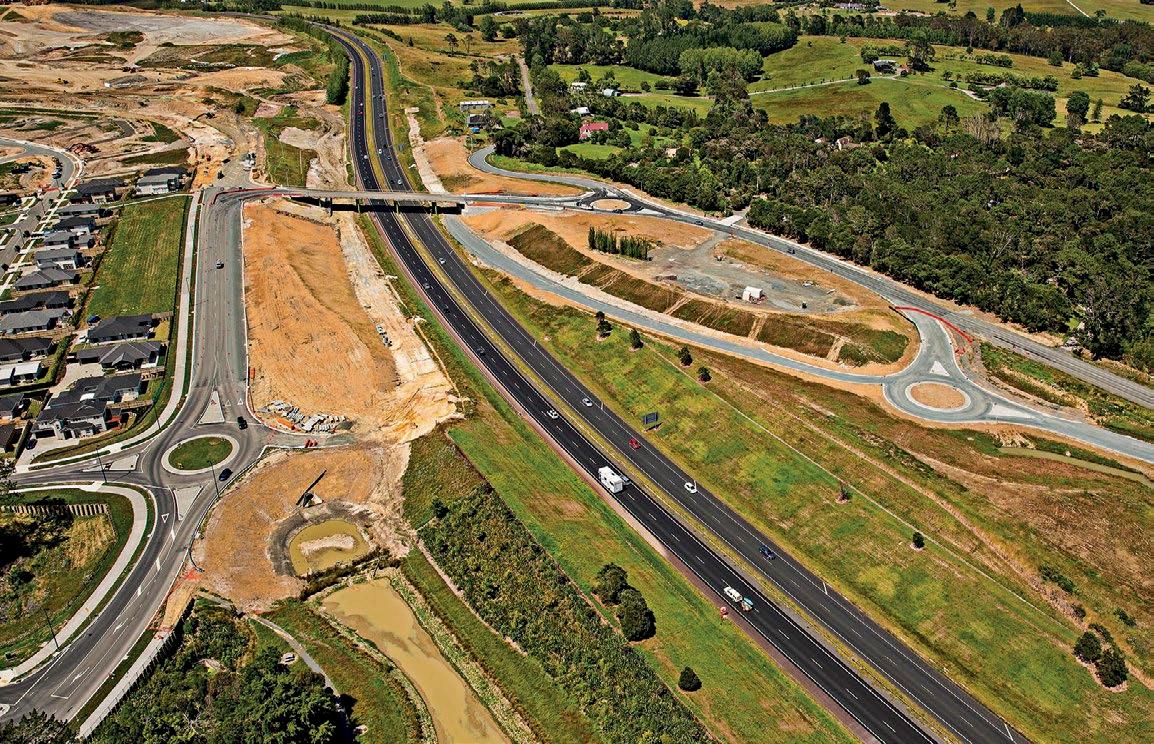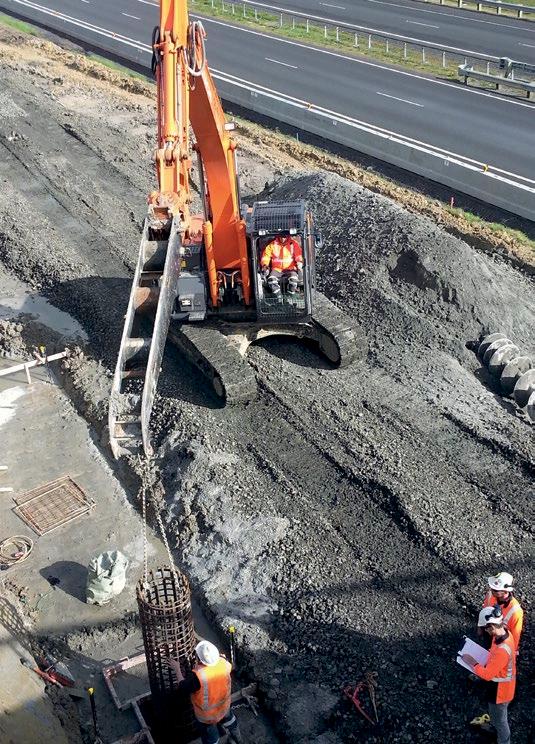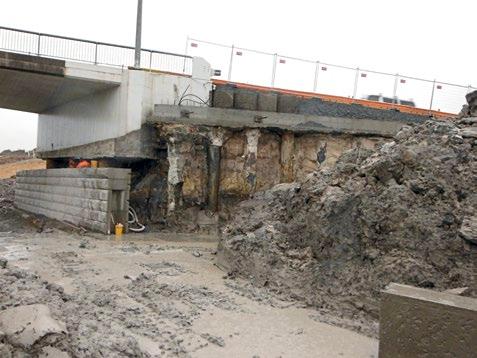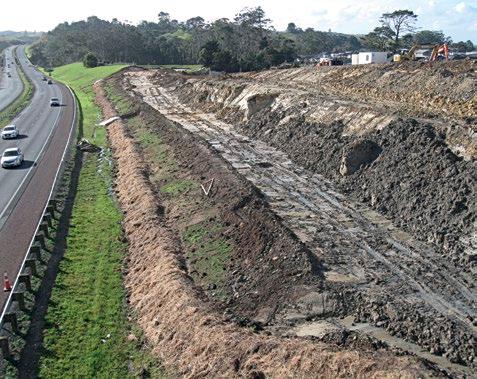
4 minute read
Ross Reid Contractors
Building the missing link
to the Millwater subdivision
Advertisement
You can barely go a day without hearing about the Auckland housing crisis and the residential developments that are intended to fix it. What’s less discussed, however, is the infrastructure that these developments will eventually depend on. Enter Ross Reid Contractors, which recently built a privately funded motorway connection between one of these developments and Auckland city.
CATEGORY 3
PROJECT: Wainui Road Interchange, Auckland CONTRACTOR: Ross Reid Contractors I t’s a bit complicated, but here’s how the story goes. Ross Reid Contractors was engaged by WFH Properties to carry out the Wainui Road interchange works, a $16.9 million contract. Even though this was public infrastructure, the client had to fund this project to gain access to the land it owned on Wainui Road.
This convoluted situation is a result of Auckland Council not being willing to release the land for development until this interchange was completed and operational.
WFH and Highgate funded the project so that they could carry on with their development plans. The land they owned is one of the government’s Special Housing Area (SHAs) – land areas earmarked for the fast-track development of affordable housing.
Basically, until the interchange was built, 900 lots owned by the client were on stand-by.
Among other things, Ross Reid’s project included slip remediation works, the strengthening of the Wainui Bridge abutments, the upgrade and widening of 1.5 kilometres of the Millwater Parkway, upgrades to Wainui Road, street lighting installation, service relocation, and pavement construction (some of which took place within a live traffic corridor).
Works started on 17 March 2014 and ended on 13 May 2015.
Now built, and approximately 30 kilometres from Auckland’s CBD, the 700-metre-long ramps and roundabouts will serve



the Millwater subdivision, which will in time house 10,000 people, plus the 60-hectare Highgate Business Park (which will accommodate a further 500).
The interchange may also one day link to a second SHA development at Silverdale North.
Ross Reid business development manager Prutvi Kumar says the company’s crews had to work throughout the winter to meet project deadlines.
“We had to do this in live traffic and in winter. Initially we had programmed to carry out the works by installing temporary barriers on the State Highway and single lane closures of the Millwater parkway and Wainui Road. However, to reduce costs and time we changed the traffic management on Millwater parkway to road closure,” he says.
“Also, to avoid disruptions on the State Highway we installed permanent guard rails, as per design, and reduced the requirements of temporary barriers. Auckland Motorway Alliance/NZTA accepted our proposal and we installed temporary barriers for a short duration when the tie-in works were carried out.
“The soil column installation for the slip remediation on the on-ramp batter was carried out in the winter months. We changed the construction methodology by installing concrete columns instead of stabilising the soil to avoid quality control issues. The soil columns were drilled and filled with concrete immediately and the works were completed in a very short duration.
“The pavement construction in the winter months was [also] very difficult [so] we discussed with consultants regularly and changed the pavement design several times to avoid delays. The pavement was constructed with various design options.
“We had three days off at Christmas. The road was formed on Wainui Road, asphalted for the traffic, to avoid disruption through the Christmas break. That was a milestone.
“When the weather was fine we undercut the subgrade and improved it by replacing with aggregates. When the ground condition was wet we stabilised the surface with lime and cement and covered it immediately with aggregates and carried on with the pavement construction.”
Prutvi says a lot of effort was put into stakeholder management. This was especially important because of the many service providers involved, which included NZTA, Auckland Transport, Chorus, Vodafone, Vector and Auckland Council.
“For example, NZTA and Auckland Transport were consulted during the development of traffic management plans and on approval we implement the plans,” he says.
“Adequate signage was also installed to notify the public of what we were doing. We monitored the disruptions to the public and minimised disruptions, as some of the tasks were carried out during night.”
Taking into consideration the project timeframes, existing infrastructure, cost constraints, and weather, Ross Reid and subcontractors Fulton Hogan and Woods had the collective experience, resources and attitude to get the job done on-time, to budget and to government requirements.
It’s unlikely that prospective home buyers making their way out to look at the new subdivisions will ever stop to think about the roads that got them there. But they should. l










